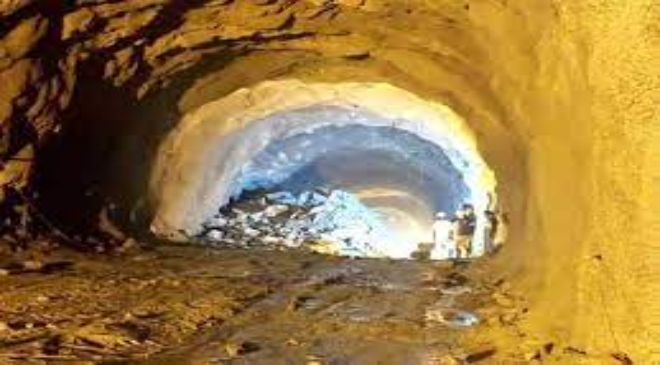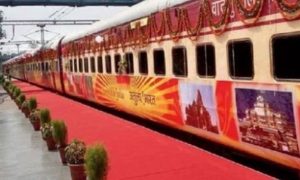T-49 is the longest tunnel of Indian Railways, running between Sumber and Arpinchala station of Katra-Banihal section of USBRL mega project.
India’s dream of fully integrating with the Valley is finally tangible with the Kashmir Railway Project ready to join the Indian Railways canvas by 2023. The project is the highest altitude railway network in India – defying gravity on the impossible terrain of the Pir Panjal mountain range.
In Kashmir, the rail route owes its complexity to the dangerous rugged geography of the Himalayas. However, the engineering marvel of the Udhampur-Srinagar-Baramulla Railway Link (USBRL) has stunned the nation with its extraordinary approach in building its main – T-49 tunnel in an impossible terrain.
Check here all the details you need to know about the T-49 tunnel:
Read More: Indian Flights May See Higher Domestic Ticket Fares, Lower International Prices In Coming Months
Length
The last few years witnessed slow progress in the project due to the pandemic but with its expert team, today the tunnel T-49 has surpassed the 11.2-km long Pir Panjal Tunnel on the Banihal-Qazigund section of the Kashmir Railways Project. At a length of 12.758 km, T-49 is the longest tunnel of Indian Railways, running between Sumber and Arpinchala station of Katra-Banihal section of USBRL mega project.
The USBRL project is set to be 272 km long, constructed on access roads connecting 147,000 people in 73 villages; out of which 161 km that connects 29 villages, has already been commissioned and is in operation. The course includes numerous bridges, viaducts, and tunnels.
Read More : Hong Kong not to lift travel bans until outbreak eases, says the government
Route
The track’s alignment was the biggest engineering challenge ever faced; only next to Tibet’s Qingzang Railway, permafrost at 5,000 m above sea level. To add to the list of achievements, USBLR has credited itself with a 1,315 meter-long bridge, 359 m above the riverbed of the Chenab River; and another 657-meter-long bridge over Anji Khad, 186 m above the riverbed.
For constructing the bridges Weathering Steel is used to do away with the need for painting. Situated in Reasi district, the bridge over the Chenab River is the world’s highest bridge, 30 meters higher than Eiffel Tower.
The 111-km stretch between the lower Himalaya’s Katra-Banihal section is also under progress at a rapid pace. It has 37 bridges of which 20 are complete, and 35 tunnels of which 27 are the main ones, and 8 are escape tunnels.
Features
Indian Railways have fought the issues with steel arches, lattice girder support, and several feet of shotcrete. As bank engines will not be used in the railway, the journey will be quicker. There will be a provision for future doubling on major bridges, and future electrification of the line. At first, the rail line will use diesel locomotives as the region lacks electric bandwidth.
T-49 has two burrows for safety – the main tunnel and an escape tunnel. In line with international standards, the escape tunnel runs parallel to the main tunnel, connected by cross passages every 375 meters to allow for rescue and restoration work.
It uses the new Austrian Tunneling Method (NATM), which is a novel approach to the “drill and blast” technique in the teetering Shivalik Hills. Its cross-section profile is designed to give it a horseshoe appearance and built to accommodate a speed of 100 km per hour.
The north gateway of the tunnel is located near Arpinchala village of Ramban district situated in Mahu-Mangat Valley at an altitude of 1,600 m. The south gateway of Tunnel T-49 is located in the quaint Sumber village, 45 km from the district headquarters Ramban in Jammu and Kashmir at an altitude of 1400 m.





































